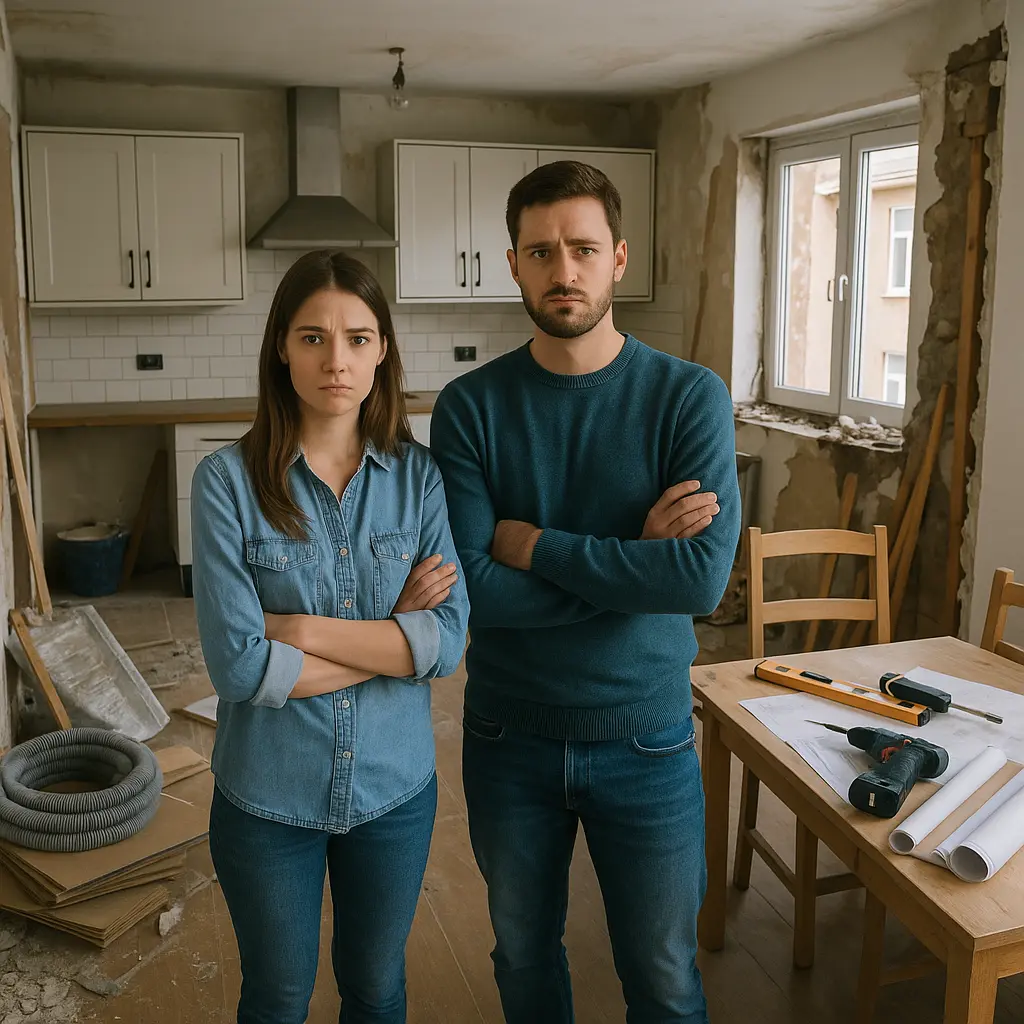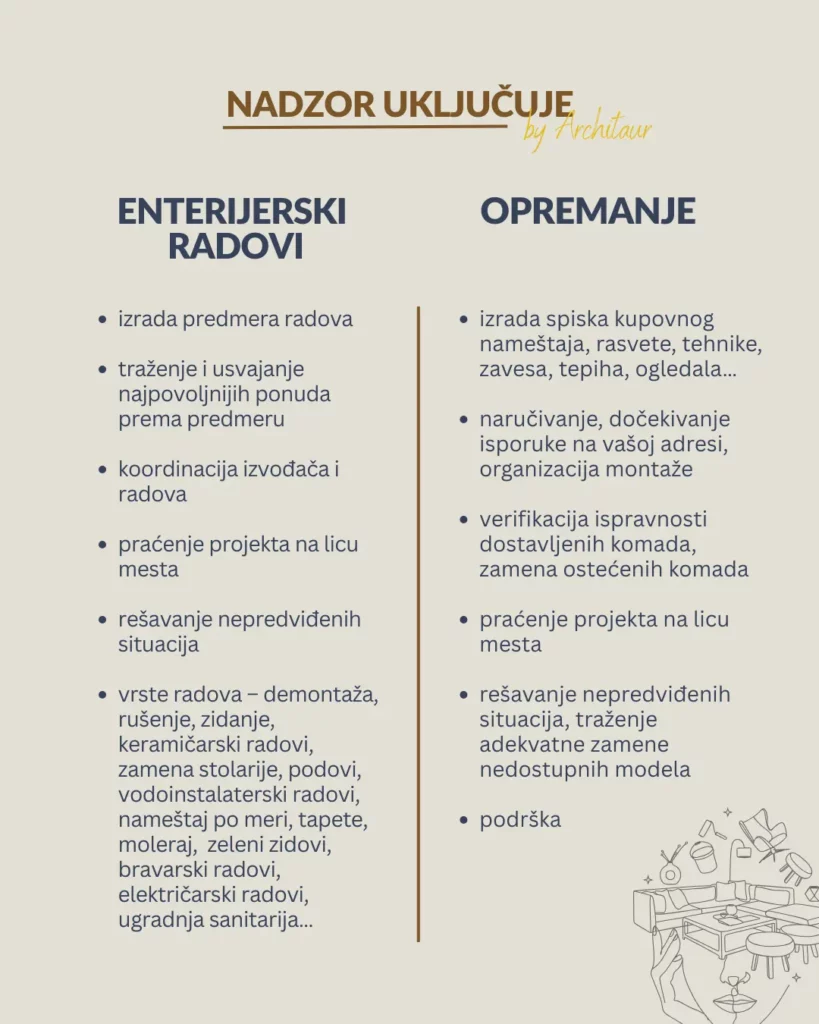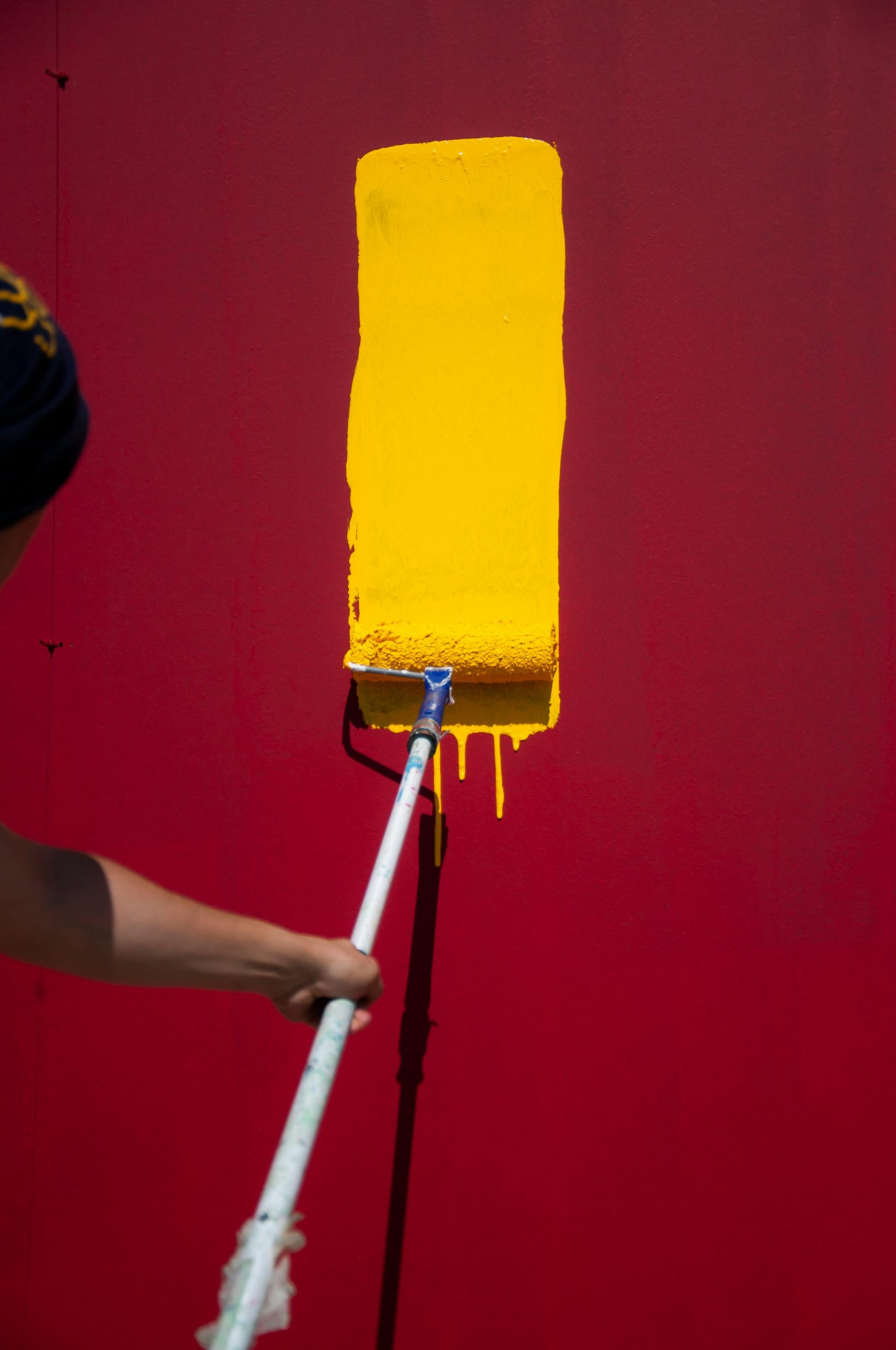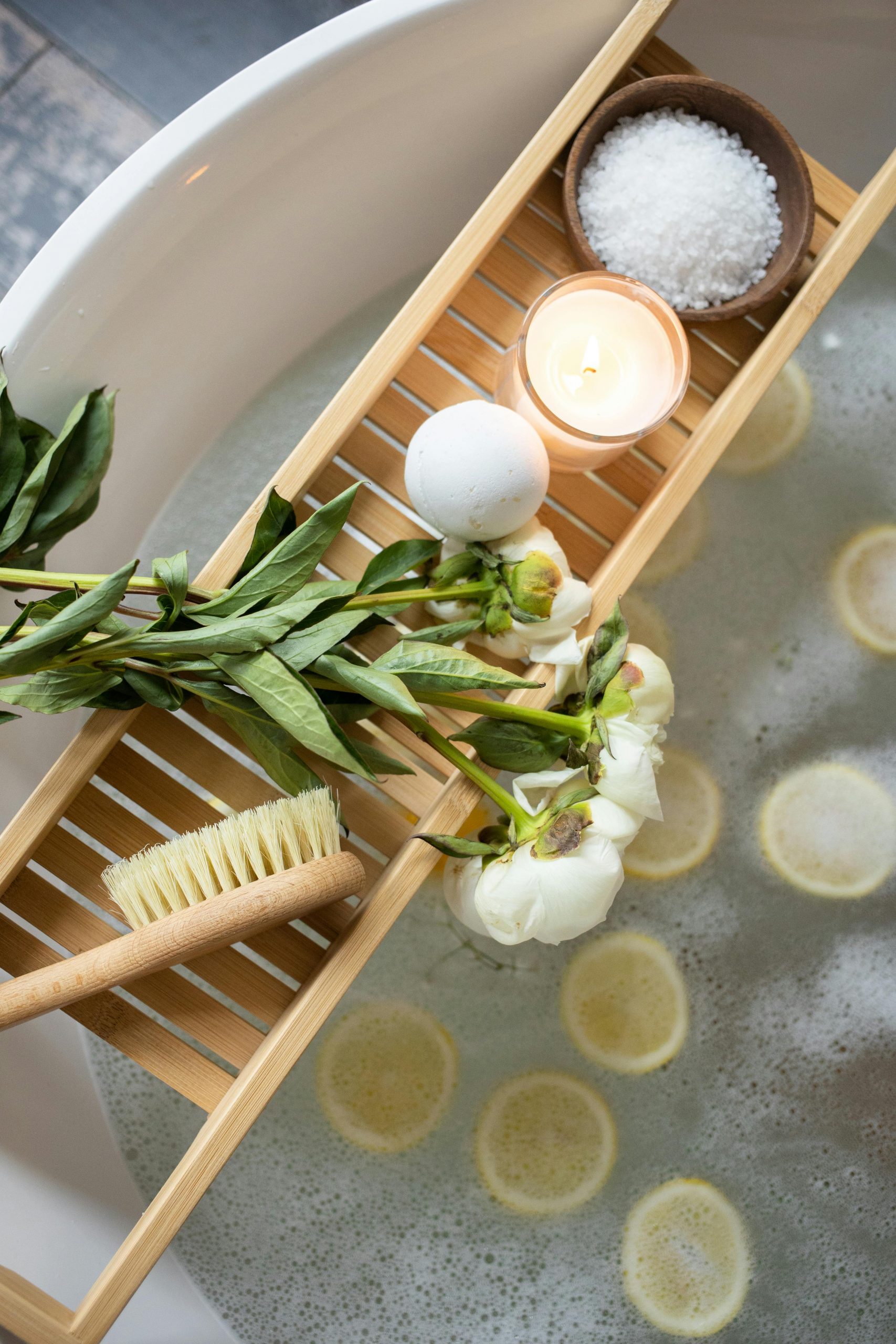Renovating or furnishing a home often begins with enthusiasm, inspiration, and detailed plans. You browse Pinterest, call an interior designer, and choose materials with love. On paper, everything seems clear—but once the work begins— —a new reality sets inA reality where contractors have their own "interpretation of things," delays happen due to poor coordination, and your phone rings more than it did when you were launching your business.
“We need to move into our new apartment by the end of the year. It’s the sixth day in a row I’ve been at the site, supervising the renovation in 35+ degree heat, without air conditioning. I get to see my two-year-old for just an hour before bedtime. My husband and I have been taking turns like this for three months now. We had to take down our newly installed kitchen because the contractor damaged the wiring in the wall during installation. Now I’m waiting for the electrician, then the carpenter again… It’s a nightmare. I just wish someone else had handled all of this for us.” – Marina, 31, Belgrade
That’s the story of a couple who realized—too late—that they didn’t have to take on the adventure of apartment renovation all by themselves.This text is for everyone who has no idea what challenges might come once the process begins — and for those who know all too well and are now looking for a way to spare themselves.
“For anyone who has hired an interior design professional, construction supervision should never be considered an optional extra.”– Why this is the professional stance—and the answer to the problem we've just described—find out below.
Supervision is an essential part of the execution process; it is what makes the difference between a space that looks beautiful in a rendering and a space that functions perfectly in reality.
5 situations that can happen if you manage the construction work yourself
1. “The contractor decided to do it differently because it was easier for him.”
Without the presence of a professional who interprets the interior design project and defends every detail, contractors often make adjustments "on the fly." The result? Compromises you didn’t want and deviations you only notice when it’s too late.
2. “We don’t know where the days have gone, yet the work is at a standstill.”
Without coordination between all parties — the tiler, electrician, plumber, and carpenter — phases overlap, get delayed, and interfere with each other. The process becomes a maze.
3. “It was more expensive than we planned.”
Even with a detailed budget, small changes on site, incorrect materials, or additional work can significantly increase the total renovation cost.
That’s why supervision keeps these costs under control — because it knows what is essential and what are arbitrary demands from the contractors.
4. “We didn’t know that needed to be checked before installation.”
Seemingly small details (the position of sockets, exact height of the sink, grout color, screws sticking out) can jeopardize the entire visual and functional effect.
An interior design project is not just aesthetics — it’s a set of precise technical requirements that someone must monitor on site.
5. “We never want to go through this again.”
This is the sentence we most often hear from people who undertook renovation themselves, without a designer’s help and without professional supervision. Regardless of their expertise in their own work, executing an interior design is a specific skill that requires experience, consistency, and presence — every single day.

At Architaur Studio, we view supervision as an integral part of project execution. Especially when working with clients who don’t have the time to manage contractors, suppliers, and daily challenges on the construction site.
Supervision as the bridge between concept and execution
When someone from our team supervises the project, they don’t just “watch the work” — they manage it. This means:
- Every project detail is respected,
- Contractors receive clear, precise instructions,
- Problems are solved before they arise,
- You don’t get phone calls about every little issue,
- And the work is completed on time, within budget, and—without frustration.
In practice, supervision is what ensures that an Interior design project doesn’t remain just a beautiful idea, but comes to life as a functional, cohesive, and lasting space.

Is supervision worth it?
In numbers:
- Prevents 10–30% in additional costs caused by poor decisions,
- Saves you weeks of your time,
- Eliminates the risk of reconstructions and repairs in the near future.
Experience shows that supervision:
- Allows you to focus on your work while your home is being renovated,
- Protects you from conflicts with contractors,
- Saves your nerves and emotional energy.
Supervision ensures that at the end of the process, you don’t say, “It could have been better,” but rather, “This is exactly how I imagined it.”
On our Instagram profile you can find videos of interiors completed under our supervision.
Are you ready...?
If you’ve invested in Interior Design teamdon’t let the execution become a gamble. Site supervision is what keeps your project on the right track — from the first screw to the final decoration.
It’s not an extra cost. It’s an investment in security, peace of mind, and quality.
Through dozens of completed projects, we’ve seen how much of a difference supervision makes — even when everything else is in place.
So before you ask, “Is it worth it?”we ask you:
Are you ready to build without anyone protecting your vision?




